How will you convert Ph−C≡CH→Ph−O∣∣C−CH3?
To convert phenylacetylene (Ph-C≡CH) into acetophenone (Ph-C(=O)-CH₃), we can follow these steps:
Step 1: Hydration of Phenylacetylene
The first step involves the addition of water to phenylacetylene in the presence of an acid. This reaction is known as the hydration of alkynes, and it follows Markovnikov's rule.
Reaction:
Ph-C≡CH+H2OH+−−→Ph-CH=C(OH)-CH3
Explanation:
- The triple bond (C≡C) in phenylacetylene reacts with water (H₂O) in the presence of an acid (H⁺).
- According to Markovnikov's rule, the hydroxyl group (OH) will attach to the carbon with fewer hydrogen atoms (the terminal carbon), while the hydrogen (H) will attach to the other carbon.
Step 2: Tautomerization
The next step involves the tautomerization of the formed enol (Ph-CH=CHOH) to form the corresponding ketone (acetophenone).
Reaction:
Ph-CH=C(OH)-CH3⇌Ph-C(=O)-CH3+H2O
Explanation:
- In this step, the hydrogen atom from the hydroxyl group shifts to the adjacent carbon, and the double bond shifts to form a carbonyl group (C=O).
- This results in the formation of acetophenone (Ph-C(=O)-CH₃).
Final Product
The final product of the reaction is acetophenone (Ph-C(=O)-CH₃).
Summary of Steps:
1. Hydration of phenylacetylene to form an enol.
2. Tautomerization of the enol to form acetophenone.
The first step involves the addition of water to phenylacetylene in the presence of an acid. This reaction is known as the hydration of alkynes, and it follows Markovnikov's rule.
Ph-C≡CH+H2OH+−−→Ph-CH=C(OH)-CH3
- The triple bond (C≡C) in phenylacetylene reacts with water (H₂O) in the presence of an acid (H⁺).
- According to Markovnikov's rule, the hydroxyl group (OH) will attach to the carbon with fewer hydrogen atoms (the terminal carbon), while the hydrogen (H) will attach to the other carbon.
The next step involves the tautomerization of the formed enol (Ph-CH=CHOH) to form the corresponding ketone (acetophenone).
Ph-CH=C(OH)-CH3⇌Ph-C(=O)-CH3+H2O
- In this step, the hydrogen atom from the hydroxyl group shifts to the adjacent carbon, and the double bond shifts to form a carbonyl group (C=O).
- This results in the formation of acetophenone (Ph-C(=O)-CH₃).
The final product of the reaction is acetophenone (Ph-C(=O)-CH₃).
1. Hydration of phenylacetylene to form an enol.
2. Tautomerization of the enol to form acetophenone.
Similar Questions
Knowledge Check
Find the product of following reaction:
Ph−CH2−O∣∣C−CH2−Ph+Ph−O∣∣C−O∣∣C−PhNaOH−−−−−−→ΔA B
B C
C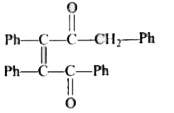 DNone of these
DNone of theseThe base catalysed addition of a compound having active methylene group (or relatively acidic hydrogen) to activate alkene is known as Michael addition reaction.
Ph−CH=CH−O∣∣C−OEt+H2C(COOEt)2C2H5ϴONa⊕−−−−−−→
Ph−CH∣CH(COOEt)2−CH2−O∣∣C−OEt
Mechanism

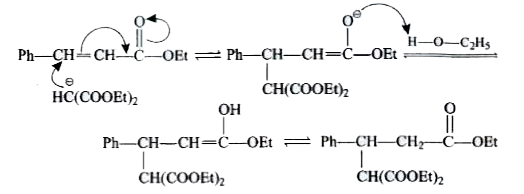
Find out product of following reaction :
 AH3C−CH∣CH(NO2)2−CH2−O∣∣C−HBH3C−CH∣CH(CHO)2−CH2−O∣∣C−HCH3C−CH∣CH2−C∣∣O−H−CH2−NO2DNone
AH3C−CH∣CH(NO2)2−CH2−O∣∣C−HBH3C−CH∣CH(CHO)2−CH2−O∣∣C−HCH3C−CH∣CH2−C∣∣O−H−CH2−NO2DNoneThe base catalysed addition of a compound having active methylene group (or relatively acidic hydrogen) to activate alkene is known as Michael addition reaction.
Ph−CH=CH−O∣∣C−OEt+H2C(COOEt)2C2H5ϴONa⊕−−−−−−→
Ph−CH∣CH(COOEt)2−CH2−O∣∣C−OEt
Mechanism

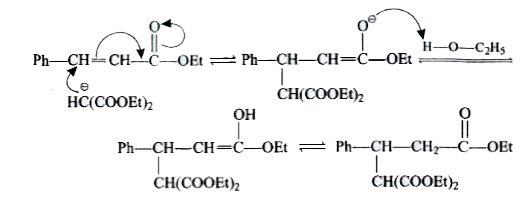
 A
A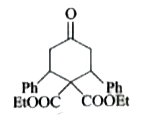 B
B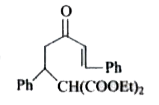 C
C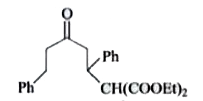 DNone of these
DNone of these
Acid-catalyzed mechanism of given aldol reaction.
2CH3−O∣∣C−CH3HCl−−→CH3−O∣C−CH=CH3∣C−CH3+H2O
View SolutionShow how the carbanion ɵCH2−O||CCH3 is stabilised by resonance.
View SolutionHow many of the following will give 2,4-DNP test.
1.CH3CH=O (2)CH3−O∣∣C−CH3 (3)Ph−CH=O (4)Ph−O∣∣C−CH3
(5)Glucose (Aldose) (6) Fructose (Ketose) (7) HCOOH (8) Ph-NH-OH
View SolutionThe base catalysed addition of a compound having active methylene group (or relatively acidic hydrogen) to activate alkene is known as Michael addition reaction.
Ph−CH=CH−O∣∣C−OEt+H2C(COOEt)2C2H5ϴONa⊕−−−−−−→
Ph−CH∣CH(COOEt)2−CH2−O∣∣C−OEt
Mechanism

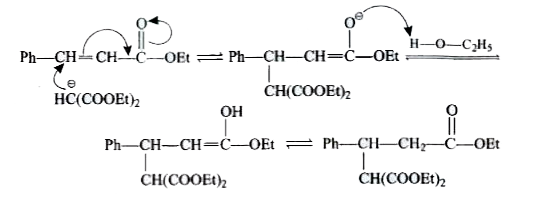
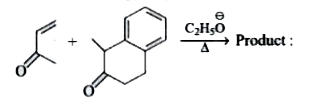
View SolutionCompound having −O∣∣C−CH3 group reacts rapidly with halogen in presence of a base to form haloform. The reaction is known as haloform.
R−O∣∣C−CH3X2+ϴOH−−−−→R−O∣∣C−ϴO+CHX3
Mechanism
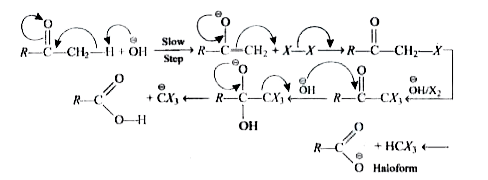
Consider the following reactions:
Reaction I →Ph−O∣∣C−CH3Cl2,ϴOH−−−−→Ph−O∣∣C−ϴO+CHCl3
Reaction II →Ph−O∣∣C−CD3−Cl2,ϴOH−−−−→Ph−O∣∣C−ϴO+CDCl3
Which of the following is correct comparison of the rate of reaction I and II?
View Solution